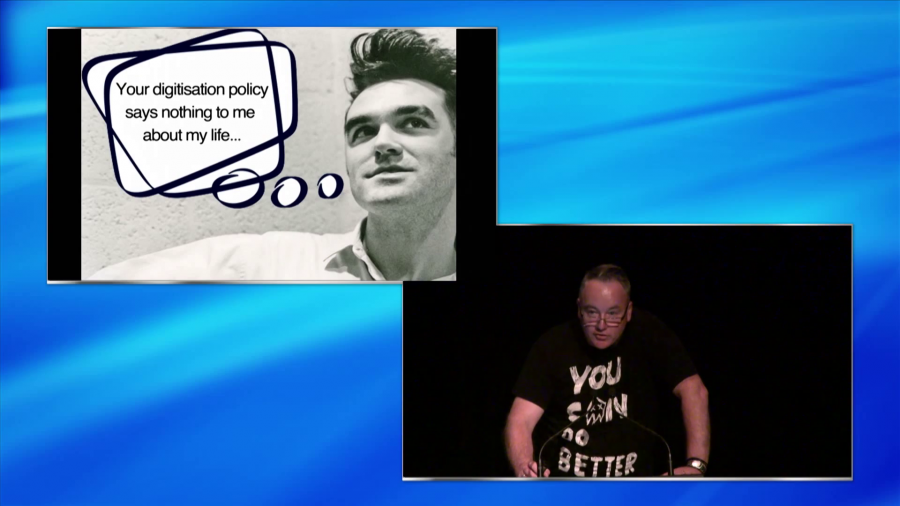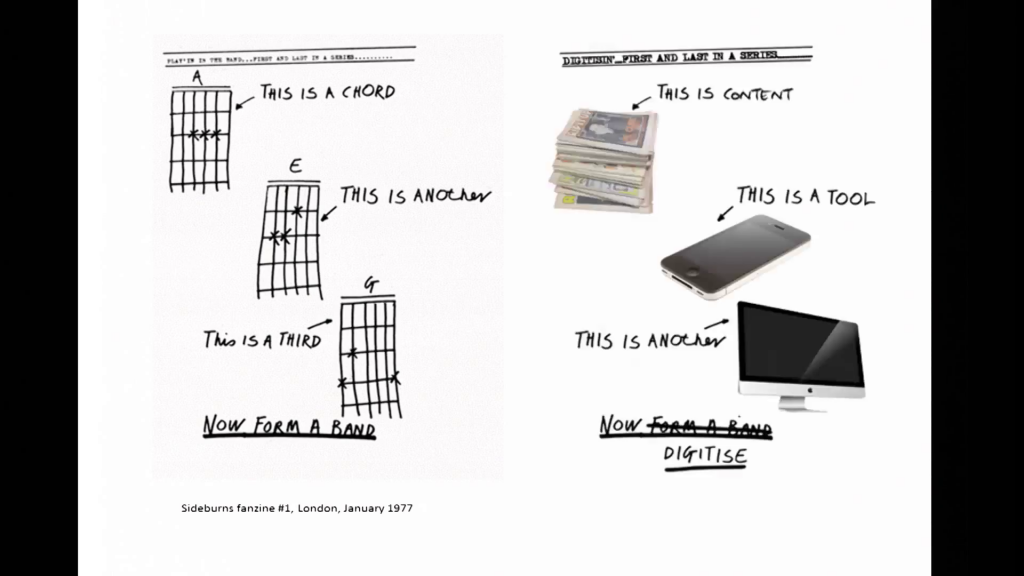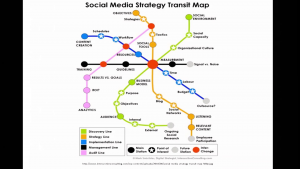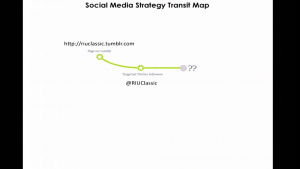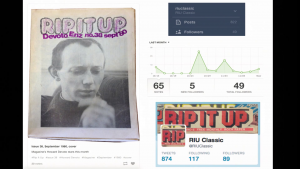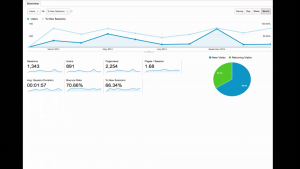Kia ora. Thank you. Hi. My name is Simon Bendall. Some of you around here may recognize me from my work around a few cultural institutions in Wellington. But I’m here today in my capacity as a private citizen to tell you about my DIY digitization project. This afternoon, I’ll give you a quick rundown on the what, where, and how, and introduce some themes that I’ll try and to attend to in the panel discussion on music archiving tomorrow.
Rip It Up was a free monthly music magazine started in 1977 by Murray Cammick and Alistair Dougal. It appeared at a time when the pop cultural landscape in New Zealand could aptly be described as a wasteland. It was perfectly timed for the impact of punk rock, and was there to capture the resultant explosion in the local New Zealand music scene, which gave birth to a number of iconic bands and independent record labels, as well as covering what was happening overseas. I’ve been a fan since picking up my first copy and hot-footing it out of the record store at the age of twelve, still not believing I’d not get hauled back for stealing it.
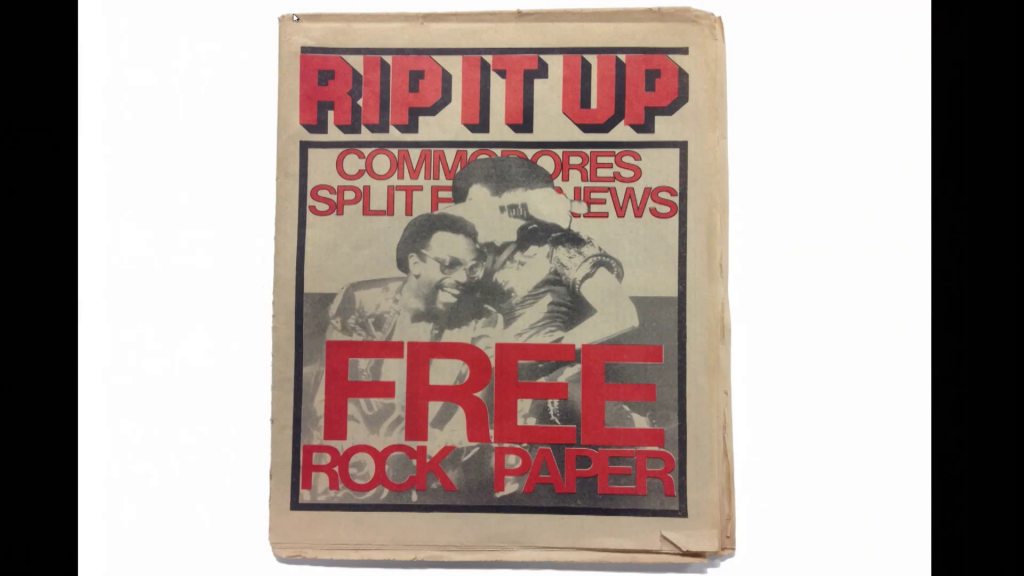
So, why am I doing this? Rip it Up is such a rich resource, especially in the early years. Nothing else was really documenting pop culture, let alone the nascent alternative culture that was starting to boil up. The prevailing attitude in the mainstream media of the day seemed to be that pop music was kid’s stuff. It would barely rate a mention in newspapers, and any television presence aside from [?] pictures, which played at night, was played in the afternoon or early evening. Pop music was for kids. Adults didn’t listen to pop music, and if they did they generally didn’t want to be challenged by anything weird or different, and didn’t want to read about it.
Rip It Up was an oasis in the desert and a vital lifeline for music news from around the world, as well as from around New Zealand. This was a time when copies of UK magazine NME, for example, would arrive by sea three months later. Rip It Up allowed a feeling of connectedness with the wider world, a feeling of possibility, and also the chance to witness the birth of things made locally that would actually impact around the world.
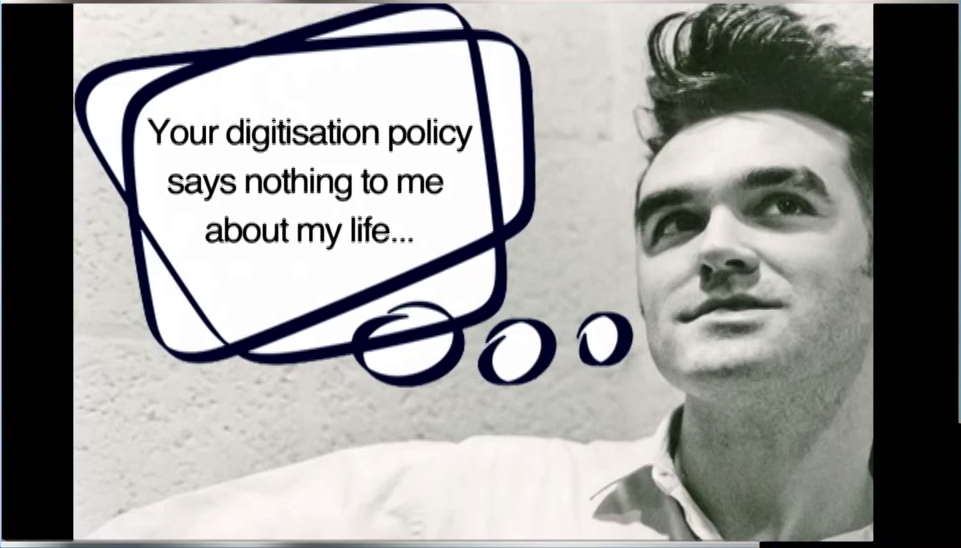
I’ve long since since wanted to see Rip It Up as a digital entity, but was faced with a dilemma that this was never going to rank highly in a national institution’s priority digitization list. The slide is slightly facetious.
But I was faced with two possibilities. I could either wait for it, or do it myself. So, taking inspiration from this punk rock rallying call which came out in Sideburns fanzine in 1977 which laid bare the simplicity of starting a band, I did it myself.
So, don’t get me wrong. This is no fancy all-singing, all-dancing digitization. I do this in my spare time. I use my phone camera. Some images are blurry and hard to read. It’s nowhere near as good as I’d like it to be. There’s no OCR, no easy way to search. But it’s there, and it’s available.
The copyright question
So the big question, of course, is this one. I avoid even asking this one, which you folks don’t get the luxury of doing. [applause] You’re supposed to stand up and yell “Judas.” So, this drove my platform of choice, which happened to be Tumblr. I was unprepared to risk the wroth of anyone who got upset with what I was doing, but totally prepared to tear it all down in an instant if things did get rough. Tumblr wouldn’t be my platform of choice in an ideal world, but it would be somewhere where I could keep things-low key enough, just to see what would happen. It’s kind of off radar for adult, lawyer-y types, I hope. And it certainly wouldn’t be the only Tumblr out there with content of dubious origin.
This of course was all part of my grand social media strategy, which I managed to simplify somewhat. So, with a Tumblr account set up, I set up a complementary Twitter account which would post whenever I uploaded a new page. I targeted a few people who I thought would be sympathetic, and a bunch of people with similar interests that I knew who would be into music, and people I already followed. As I didn’t know what the reaction would be, the plan was to keep it low key and see what happened organically.
So he’s a few stats. There are currently 49 followers on Tumblr. So you know, we’re not breaking any records or anything. We’ve got 89 on Twitter. And the currently most-viewed page this month is the cover from September 1980 featuring Magazines’s Howard Devoto. Analytics-wise there’s been over 1,300 sessions since beginning in March. And the best thing for me is that 33% of returning visitor traffic. People are finding this interesting. Some people are. The two big peaks in May and September correspond to when I was lucky enough to get the project mentioned a couple of times by Russell Brown in his Public Address blog.
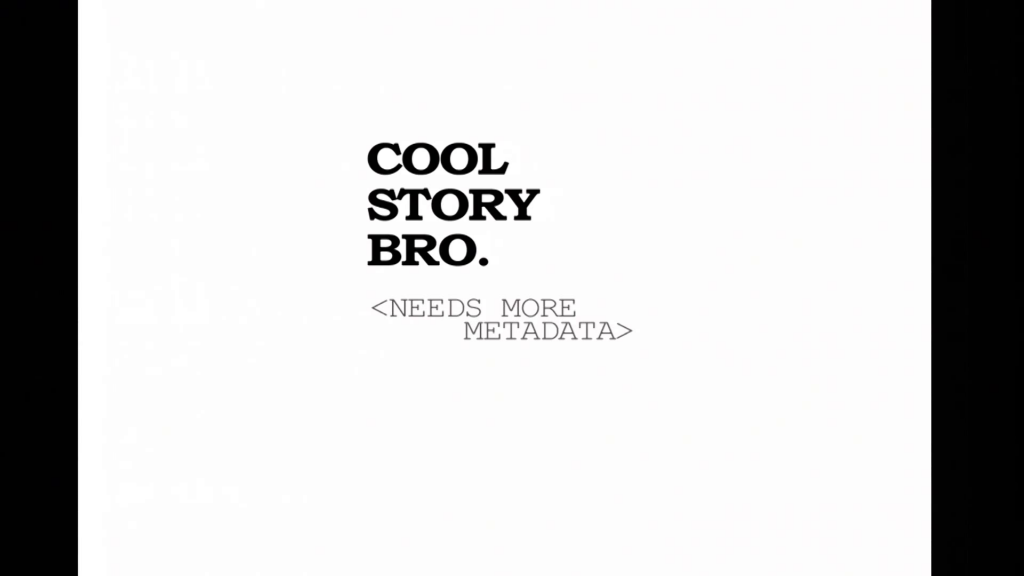
So, so far so good. But what about the metadata? Tumblr’s not the greatest platform, but it does allow some flexibility to help discovery with tagging. I write a brief summary or each page that I put up—the letters are usually the most fun—and take as much as possible, though not everything. Issue date and page number are tagged for each page, and I pay particular attention to taking writers, and to try and maintain links between bands and across time.
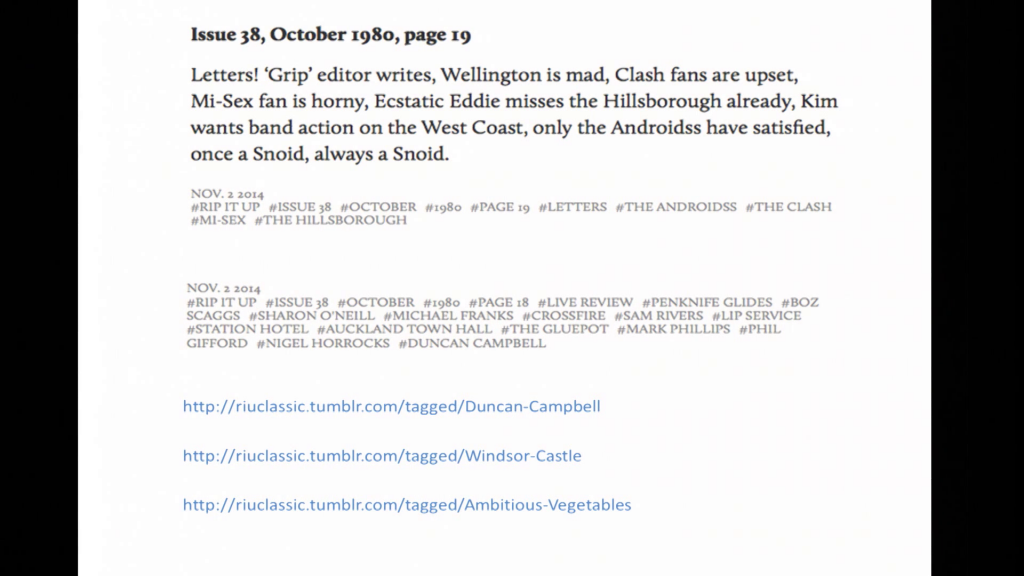
This at least allows some different ways into the content. So, for example in the three URLs here you can find everything written by Duncan Campbell, any gig reviews from Auckland venue the Windsor Castle, or if you’re interested in Andrew Fagan’s pre-Mockers career, anything about local band The Ambitious Vegetables, who also made an appearance this morning in the “Up the Punks” presentation.
So that’s about it, really. I’d let you ask questions, but you’re not allowed to ask questions in the lightning round. So I’ve got some for you. Given that this material is out there in the wild, will you as a cultural heritage institution engage with it? Should this be in Digital New Zealand, for example? Should you link to it from abstract on INNZ to enhance the user experience? Will this be included in the New Zealand domain web harvest? Will it go into the NDHA?
Now, I know the answer to these is most likely to be no, but these are the issues that you’re going to need to be thinking about and dealing with. This is a thing. It exists out there, And if I as a middle-aged suburban dwelling man am doing this, there’s plenty more people out there with particular interests doing the same thing. How are you going to engage? Thank you very much.
Legal correspondence to the addresses on the screen, thank you.
